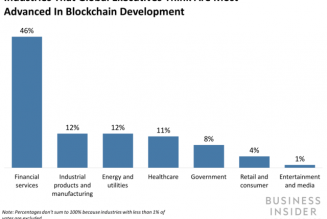- Don’t put too much stock in how companies’ quarterly earnings compare year-over-year to 2020. The pandemic caused some services’ subscriptions to spike early in the year (Netflix) or build throughout the year (Spotify).
- Long-term trends have not changed. On-demand streaming will continue to erode linear programming like cable television and broadcast radio. An odd quarter here or there won’t change the course of technology in entertainment.
- Streaming video on demand (SVOD) is a battle of titans — AT&T, Comcast, Disney, Apple, Amazon, ViacomCBS — that requires big pockets to survive the war of attrition. Music streaming companies get to focus less on original content and more on technologies to create better user experiences.
Unfortunately for some video streaming companies, the first quarter of 2020 made for a challenging — and potentially misleading — comparison since companies are judged against the prior year’s quarter. Because the pandemic helped streaming adoption, expectations could be unreasonably high a year later. Netflix found this out when it released first-quarter earnings on April 20 and announced its 4 million net subscriber additions were about 50% below its forecasted 6 million and more than 70% behind the mind-blowing 15 million new subscribers it gained in 2020’s first quarter (which was more than double its 7 million forecast). Netflix’s share price dropped 8.4% the following day and barely budged the next.
For Netflix, COVID-19 struck the heart of its business model by disrupting television and motion picture production. Last year, the company was able to release video that was already in its pipeline before COVID-19 shut down productions. In 2021, Netflix’s thinned-out release schedule contributed to its first-quarter subscription slowdown, executives explained in the first quarter earnings release. Original content is a major factor in driving new subscriptions. When Netflix found itself with little to offer in the first quarter, its new subscriber count fell one-third below its forecast. But that won’t always be the case: Netflix says — and analysts tend to agree — its original content will be weighted to the second half of 2021.
Disappointing first-quarter results don’t mean SVOD or music streaming is becoming less popular or less successful. Netflix was adamant in its investor letter that “the rise of streaming to replace linear TV around the world is the clear trend in entertainment.” Spotify CEO Daniel Ek uses the same language to describe music, saying in a Feb. 3 earnings call (for 2020) that “the shift from linear to on-demand that COVID accelerated will continue and remains a massive multi-billion user opportunity.” On April 28, Ek repeated his familiar refrain, “we’re very, very early in our efforts to move the entire music industry from this one-size-fits-all [structure] to a more individual offering.” Weak year-over-year improvements won’t mean streaming businesses have a content problem that will impede progress. In fact, live sports, a long-time lynchpin of linear television, has moved to streaming platforms: Amazon, ESPN+ and Hulu all broadcast live games.
That said, subscription services will inevitably face a slowdown at some point — but how far off that is varies with each platform. Former Spotify chief economist and Billboard contributor Will Page argued in December 2020 that “it’s likely that music streaming, competing for consumers’ attention against TikTok and gaming, will struggle to grow even when things return to normal.” Perhaps, although price hikes in more mature markets is the financial equivalent of gaining more subscribers. On the video side, 17% of Netflix’s subscriber growth came from the U.S. and Canada, according to the company’s latest financial statements. Still, those countries’ subscriptions added 5.3 million subscribers and accounted for 33% of revenue growth — the U.S. and Canada have a higher average revenue per user ($14.25) than Europe, Middle East and Africa ($11.56), Asia ($9.71) and Latin America (7.39).
The music and video streaming markets might seem crowded, but this is just the beginning. The best way to think about music streaming’s potential is to imagine the entire world of audio entertainment: music and spoken word on the internet, broadcast radio and satellite radio. Ek said Spotify’s April 28 earnings call the global audio market could be worth $200 billion by 2030, more than 20 times later than Spotify’s $9.5 million revenue in 2020. That may be wishful thinking on his part, but you can’t blame Ek for thinking big. As for video, Bernstein’s Todd Juenger argues that neither SVOD nor Netflix is nearing maturity, and if SVOD is the future of in-home video, and Netflix will remain the “anchor” SVOD service, the 800 million global homes that pay for in-home video entertainment “are highly likely to become Netflix members in the future.” Juenger gives Netflix a $617 price target, 21.2% above Monday’s $509.11 closing price. Morgan Stanley’s Benjamin Swinburne agrees SVOD is still in its infancy even if the U.S. has an aggregate of 300 million subscribers. His $700 price target is 37.5% above Netflix’s last closing price.
The streaming market won’t reach its potential through deep pockets and wars of attrition. Here, music companies, which are increasingly investing in podcast content to differentiate themselves from their competitors (rather than original music), don’t write big checks like SVOD companies. In the first quarter, two new streaming services debuted in the U.S. ViacomCBS’s Paramount+ and Discovery’s Discovery+, and AT&T’s HBO Max service added 2.7 million U.S. subscribers — a “solid” number, says Variety’s Heidi Chung. Comcast’s Peacock SVOD service, which paid $500 million for the streaming rights to The Office, had 33 million “sign ups” at the end of 2020. And Apple’s SVOD service, Apple+ added to its original slate by spending $25 million for the Billie Eilish documentary, The World’s a Little Blurry, and $25 million for the motion picture CODA, a record for a Sundance Film Festival entrant. These levels of spending are a cost of doing business for a streaming service. For a music streaming company placing bets on original podcast content, finding and keeping subscribers looks like an increasingly expensive game.
The bigger problem for all streaming services is the “unknown unknown,” an undetermined something that cannot reasonably be anticipated. A global pandemic is a perfect example of an unknown unknown. This year, the pandemic appears to be waning as vaccinations spread through the U.S. and the world and infection rates begin to subside in most of the world. But problems could arise in unanticipated ways. Smart companies are hedging. In its April 20 letter to shareholders, Netflix admitted to “some uncertainty” from COVID-19. Back in February, Spotify warned investors about the high degree of uncertainty in 2021 because, well, 2021 is hard to pin down. All of this could lead to a bumpy year that fails to appease people — including investors — after a stellar 2020.
“No matter what you do, you’ll always feel as though you tripped and fell,” sings the Raconteurs’ Brendan Benson. “So steady as she goes.”











